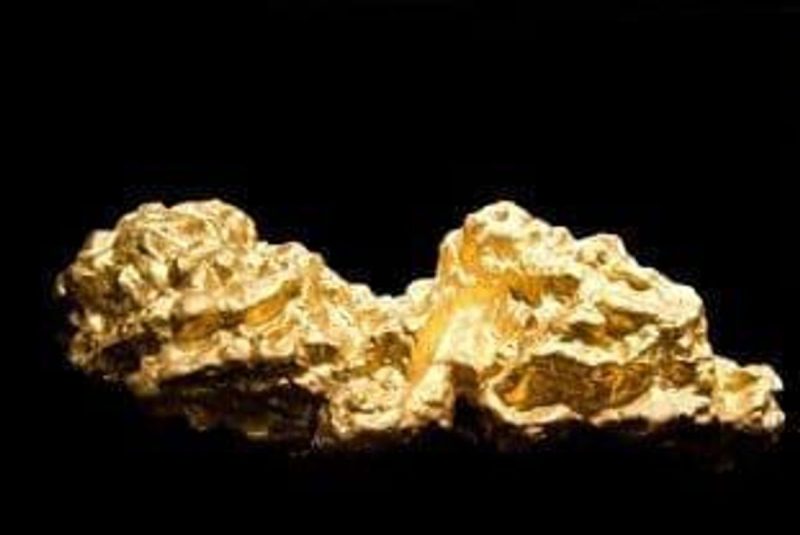Gold assaying is essential in determining the amount of gold in a mineral deposit. The process involves bringing a rock sample, most often a core obtained through drilling, to a laboratory where it is examined by experts.
Assay results are often mapped and used to pinpoint targets for future drill programs. Gold assay values at particular locations can help exploration companies learn where gold is distributed in a deposit and figure out its potential.
When some gold assay results are extremely high, but others are not, companies must carefully study the high values — these assays may not accurately reflect the gold grade of the deposit. However, strong assay values all around are a positive sign, and when companies report them to the public they may experience a share price jump.
Several assay methods are available, but the fire assay method is the accepted standard for valuing gold ore due to its accuracy; it is used by major refineries and gold-mining companies. Read on to learn more about fire assays and how companies use their results to determine gold grades.
What is the fire assay method?
As mentioned, the fire assay method is the preferred way to determine a deposit’s gold grade because it is generally the most accurate. A drawback to fire assays is that they are very disruptive; however, if performed on exploration-stage properties that is typically not a problem.
The first step in the fire assay process is to fuse or dissolve the rock sample being examined in a crucible using a lead glass flux. The flux is a mixture of materials selected by a chemist, and usually includes sodium bicarbonate, potassium carbonate, borax, litharge (lead oxide) and flour.
Once combined, the flux and rock sample are heated to encourage a reaction. The reaction is allowed to go to completion, and then the crucible is removed from the heat source. At this point, the flux mixture and rock sample have reacted to form two parts: molten glass, which sits at the top of the crucible, and metal, which sits at the bottom. The molten glass is poured off, as it does not contain any valuable metals, and the metal is poured into a mold and allowed to cool until it solidifies.
Once cooled, the solid metal is removed from the mold. This metal generally contains lead, gold and silver. The mass of metal is then placed on a cupel made of bone ash — a material that readily absorbs lead oxide, but does not absorb metal. The metal is then heated, and the lead metal is oxidized to lead oxide. The oxide is either absorbed into the cupel, or volatized off into the atmosphere.
What is left is a tiny bead containing all of the gold and silver that was in the original sample. The bead is weighed and the total weight of the gold and silver together is then known.
The final step is to separate the gold and silver (in the rare case of a sample without silver, the separating process may be skipped). The gold and silver are parted by flattening the bead and putting it in a solution of diluted nitric acid, as the acid will dissolve the silver but not the gold. The remaining purified gold is then weighed. The weight of the silver in the assay is calculated by subtracting the weight of the gold from the weight of the bead that contained both the gold and the silver.
Using the known original weight of sample that was used in the assay, as well as the weight of the gold and the weight of the silver, the contents of the ore sample in ounces per metric ton can be calculated.
How are gold assay results converted into grades?
Once gold assaying has been completed, a company can use the results to estimate a deposit’s approximate grade and tonnage. Assay results are generally converted to grades by using the amount of metal found in a sample and the sample size.
If gold assay results come from drill cores, grades must be written in terms of metal concentration over a given length; for example, 15 grams per metric ton of gold over 2 meters. While that provides only a two-dimensional snapshot of a mineralized area, enough assay results in one vicinity can be combined to form a three-dimensional graph of the tonnage and grade of a gold deposit.
Investors often respond most strongly to news about a deposit’s grade, but grade also plays an instrumental role in the behind-the-scenes financial analysis of a mining project. All mining operations come at a cost, and this cost can vary widely according to several factors.
Exploration companies generally compare two key measurements when estimating project economics: the average grade of a deposit (determined by a sampling and assaying program) and the cut-off grade.
The cut-off grade is the grade of material below which mining is uneconomic. Calculating the cut-off grade involves completing a mini-feasibility study in which all the known and potential costs of the project are accounted for. The cut-off grade is a dynamic number and adjustments routinely happen, most commonly in response to a change in the market price of a metal.
The larger the average grade is in relation to the cut-off grade, the more profitable the mine is. Properties whose cut-off grade is higher than its average project grade will not see production, unless the numbers used to calculate cut-off grade change in favor of lower operating costs.
Securities Disclosure: I, Melissa Pistilli, hold no direct investment interest in any company mentioned in this article.







































